Project leader: Prof. Dr. Thomas Altmann (Co-ordinator)
Email:Staff:
- Dr. Dominic Knoch
- Dr. Paride Rizzo
- Dr. Marc Heuermann
- Dr. Lothar Altschmied (Projekt Coordinator)
The main objective of the AVATARS project is to develop a comprehensive morphogenetic-physiological simulation and visualization model for seed formation in rapeseed (Brassica napus L.) and to uncover genetic and environmental effects on seed viability and germination. The cultivation experiments to be carried out in this work package will provide the material for temporally and spatially resolved multi-omics analyses. Integration of these data will create an interactive environment visualized by advanced virtual and augmented reality.
Forty winter oilseed rape (WOSR) lines, including three core reference lines, Express 617, AV01, and AV02 (derived from the collection of 400 lines provided by NPZi), will be grown in a field-like, fully controlled environment container-based platform in the plant cultivation hall (PKH) at IPK. Two contrasting cultivation regimes will be used in three successive cultivation seasons. One regime is designed to be optimal for seed development and the resulting seed quality, the other detrimental to this process. These contrasting regimes will be defined according to the weather conditions observed during two growth periods at the NPZi nurseries and resulting seed quality data. The plants' growth and physiological status will be regularly monitored through the automated phenotyping platform (PhenoCrane) equipped with various 2D and 3D digital imaging systems for assessment of plant architecture and coloration, canopy features and kinetic chlorophyll fluorescence.
To specify the optimal cultivation design, a pilot experiment with a spring-type oilseed rape variety (Campino) was performed in 2020. Plants were grown at different densities until maturity. At four time points after flower initiation, representing different stages of seed development, pods, or developing seeds, were harvested and dissected to test subsequent multi-omics procedures. Plant height, number of side shoots, number of pods, and seed yield per plant were determined at the end of the experiment, and non-invasive analyses are performed on mature seeds.
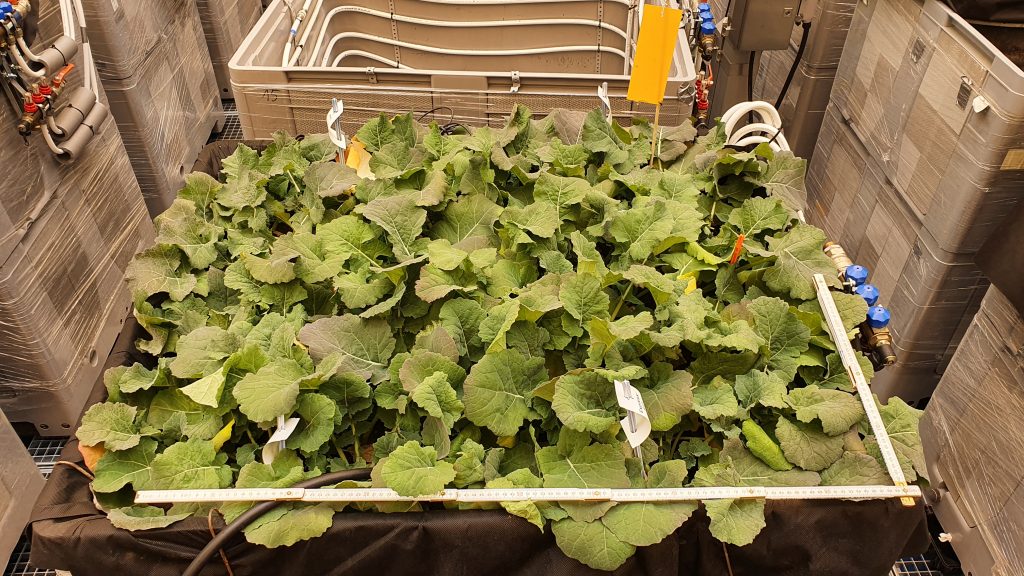
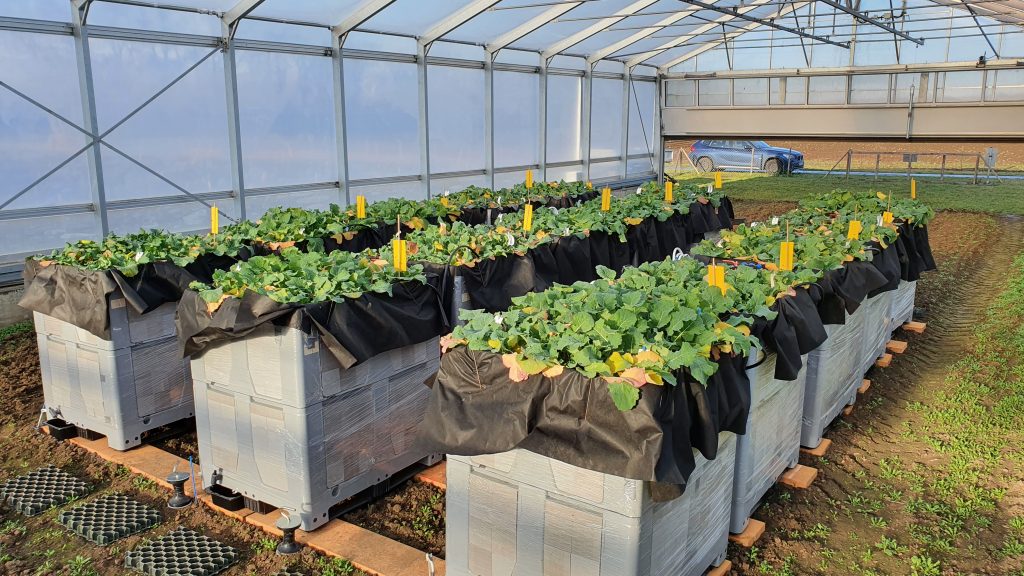
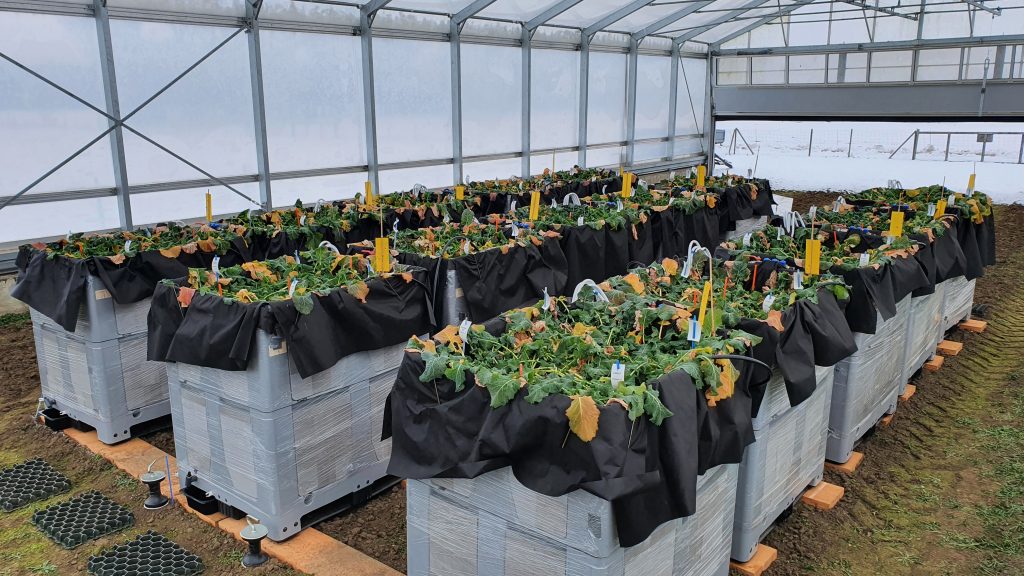
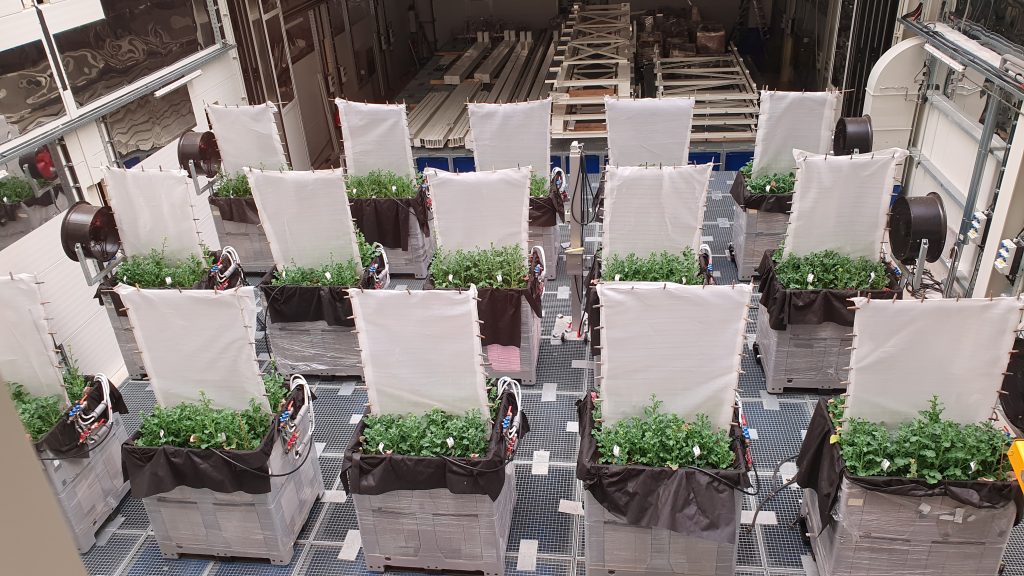
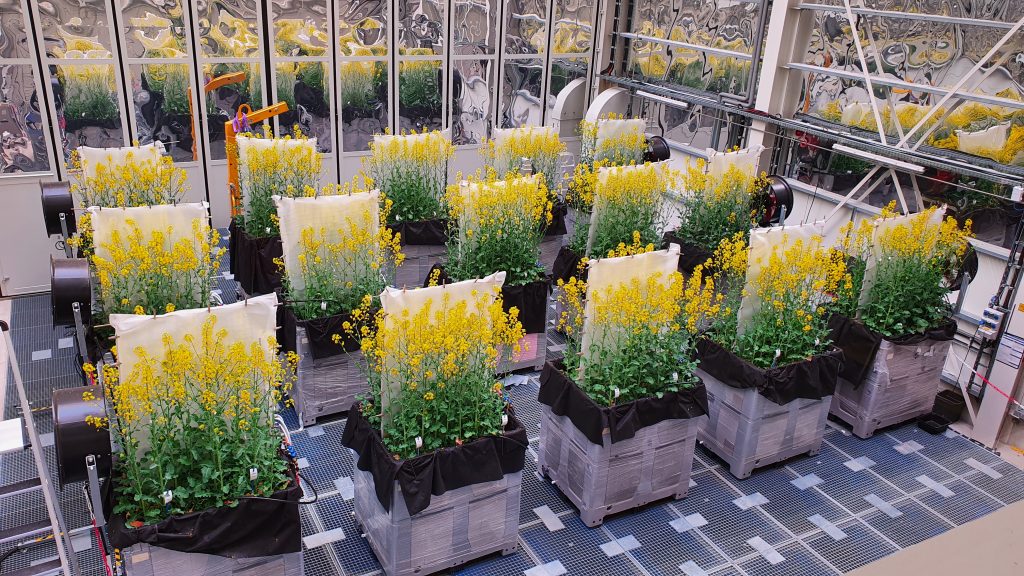
Since September 2020, the first WOSR cultivation season is conducted in the PKH with five lines subjected to beneficial environmental conditions using weekly adjusted climatization programmes. For hibernation of the plants, containers are placed outdoors in a rainout shelter during the winter months. During the first seven weeks of cultivation, manual phenotyping (BBCH stage, plant height, and rosette diameter) was performed. Seeds of the three core reference lines will be sampled at five developmental stages, dissected into outer and inner cotyledons, seed coat, and radicle. The material will be provided to all partners for detailed -omics analyses (see poster ‘AVATARS: a multi-omics approach to understand seed development of Rapeseed (Brassica napus L.’); mature seeds will be subjected to high-throughput seed phenotyping analyses. In the second and third IPK cultivation seasons, the entire collection of 40 lines will be grown and analysed under the detrimental environmental regime and the beneficial conditions, respectively. High-throughput phenotyping will be performed using the PhenoCrane system. Mature seeds of all lines in both cultivations will be sampled for the high-throughput seed phenotyping analyses, while sampling for another series of detailed structural and -omics analyses at multiple developmental stages will be done for the three core reference lines in the detrimental cultivation regime.
To support a detailed comparison of the molecular physiological states of seeds formed in two PKH experiments and four field environments, samples of five selected AVATARS lines will be taken in the late seed filling phase and analysed for transcript and metabolite patterns. To compare plants cultivated in simulated spring conditions in the PKH with corresponding field-grown plants and to enable the integration of the pre-existing large -omics data sets of the DFG-funded PREDICT project (spring oilseed rape), five selected lines of the PREDICT collection will be integrated in the spring cultivation phases of all three PKH experiments and field seasons. Early vegetative shoot material will be sampled and analysed for transcript and metabolite profiles.